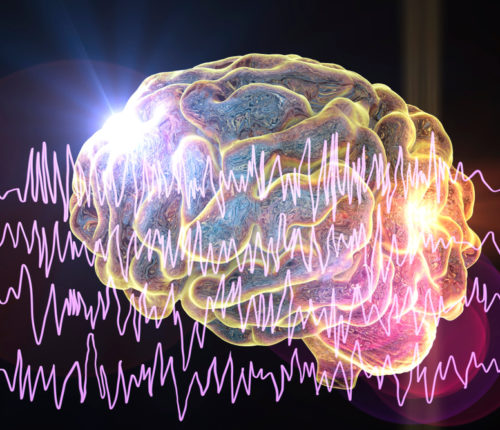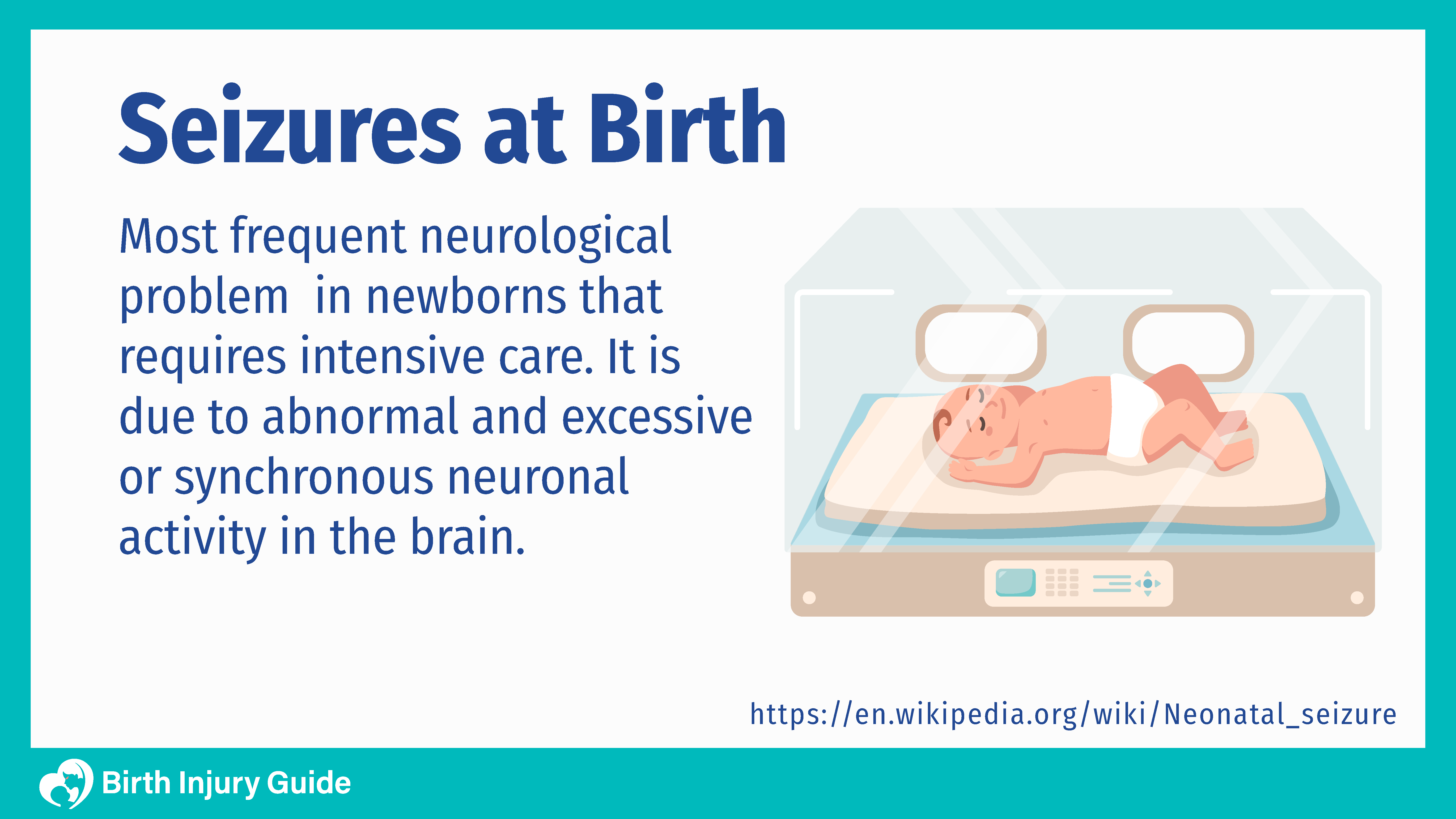
Infant Seizures
Seizures are a medical condition that occurs when the normal electrical activity of the brain and its neurons are disrupted. Because of the number of infants who experience them, seizures are considered common. However, infant seizures may be an indication of a minor underlying medical problem or a more severe problem.

What are Seizures?
The brain consists of nerve cells that use electrical activity to communicate with each other. A seizure occurs when a part of the brain experiences an abnormal electrical signal that interrupts the normal communication. Anything that interrupts normal communications in the brain can cause a seizure, including:
- High fever
- Low or high blood sugar
- Alcohol or drug withdrawal
- Brain concussion
Sometimes a seizure is the result of an injury or illness, and the individual may not have more. Individuals who have more than two episodes of seizures are generally diagnosed with epilepsy.
Types of Seizures
There are two primary types of seizure, categorized based on which part of the brain is affected. These are:
- Focal (partial): A focal seizure is a type of seizure that does not involve the whole brain, generally only one area. An example of a focal seizure is when a person’s hand is rhythmically twitching involuntarily. Focal seizures can sometimes include an ‘aura’, or the feeling of ‘Deja vu, fear, euphoria’ etc. There are two types of focal seizure:
- Simple: The seizure activity is often concentrated on a single muscle group, such as the fingers or muscles in the legs.
- Complex: Complex focal seizures can occur anywhere in the cortex. Not everyone who has complex focal seizures “passes out” during the event. However, the individual may experience a loss of awareness and unusual behaviors.
- Generalized: Generalized seizures occur in both sides of the brain. These seizures often cause a loss of consciousness and extreme fatigue afterward. The extreme fatigue occurs in the ‘post-ictal’ state. There are several forms of generalized seizure, including:
- Absence seizure (petit mal): Causes a brief “changed state of consciousness”, such as staring or “blanking out”. Posture remains intact, but the eyes may blink or twitch, and the individual may make mumbling sounds. Once the event is over, the individual does not recall what happened. Absence seizures often look like the person is zoning out. These are most common in children.
- Atonic seizure: Also known as a “drop attack”, the individual experiences a sudden loss of muscle tone. He or she may fall if they are standing, may drop their head or become limp.
- Generalized tonic-clonic seizure: Also called a grand mal seizure, this seizure is severe and occurs in five distinct phases (not everyone experiences all five):
- Limb contraction
- Limb extension
- Tremors (shaking)
- Relaxation of muscles
- Post-ictal period, which includes sleepiness, vision problems, speech problems, headache or body aches.
- Myoclonic seizure: Causes quick movements or sudden jerking of muscles. These seizures often occur in clusters several times a day, or for several days.
Causes of Infant Seizures
Seizures are often an expression from the brain that something is wrong. Seizures can make brain activity go haywire. But sometimes the seizure is an indication of an element of brain damage that already exists.
Brain-related Injuries
Some of the brain-related injuries that can lead to seizures include trauma injuries, such as skull fractures or other external forces that can lead to trauma-induced seizures. The brain could also seize due to oxygen deprivation as a result of:
- Anoxia (an oxygen-free environment)
- Hypoxia (a low-oxygen environment)
- Neonatal hypoxic Ischemic Encephalopathy (HIE, which is a generalized term for the injury related to inadequate oxygen and blood flow)
- Birth asphyxia
- Perinatal asphyxia (low oxygen environments before, during, or just after delivery)
Additionally, a seizure may happen when the brain is flooded with blood (brain hemorrhage) or when the brain doesn’t have enough blood (brain ischemia).
Group B Strep Infection
One in every four women have group B strep colonization without even realizing it, as most women are asymptomatic carriers. Because of that, it is important that physicians examine their pregnant patients at 37 weeks to make sure that the mother doesn’t pass the bacteria on to the child.
It is also important for doctors to recognize and respond to symptoms that appear in the newborn, such as:
- Fever
- Lethargy
- Trouble breathing
- Grunting sounds
- Pale appearance
- Unstable body temperature
Seizures can be an extreme manifestation of these symptoms.
Kernicterus
Kernicterus is a very severe problem. Also technically classified as brain damage, kernicterus starts as jaundice and develops as levels of bilirubin climb. Seizures are often a sign that the jaundice has progressed into kernicterus. If so, your child needs immediate attention before your child suffers from a debilitating injury.
Meningitis
Meningitis is a serious infection that develops as a result of bacteria, viruses or fungi. It is more serious than the originating infection, such as GBS that only affects the lungs. Meningitis affects the child’s spinal fluid and brain activity, and may have lifelong consequences. An infant seizure could be a sign that an infection has developed to meningitis. If you suspect meningitis, you should consult your doctor immediately. Symptoms of meningitis in newborns include:
- Fever
- Lethargy
- Poor feeding
- Extreme irritability
- Pallor
- Weak cry
- Seizures
Cerebral Palsy
Epilepsy is a known and somewhat common side effect of cerebral palsy. Sometimes infants who have seizures actually help diagnose cerebral palsy. But generally epileptic seizures are a common side effect of more severe forms of cerebral palsy, and sometimes it is so bad that physicians prescribe medication to somewhat control it (though it never quite goes away). Cerebral palsy is an injury that happens in the brain before it affects the various muscle groups, so infant seizures can be a form of brain damage.
What are the Symptoms of Infant Seizures?
Because an infant’s brain is still developing, a seizure may look different than it does in an adult. Symptoms of seizures in infants may include the following:
- Jerking or stiffening of an arm or leg (may alternate from one side of the body to the other)
- The infant’s body may suddenly jerk forward
- Facial expression, heart rate and breathing may change suddenly
- The infant’s responsiveness may be impaired (you may not be able to get your newborn’s attention)
- Suddenly falling down or falling over
- Rapid eye blinking or twitching
Tests to Confirm Infant Seizure Diagnosis
The most popular test to confirm that an individual is having a seizure is an electroencephalogram (EEG). It An EEG shows normal and abnormal brain activity and patterns. It is more difficult to interpret EEG’s among newborns because their brains are still developing and becoming more defined. Generally, only a trained pediatric neurologist can accurately interpret newborn EEGs.
In addition to an EEG, doctors may recommend magnetic resonance imaging (MRI) with special epilepsy protocol. They may also do lab work (blood and urine) to test for chemical or metabolic disorders. In some cases, genetic testing and chromosomal studies are helpful.
Treatment for Infant Seizures
The goal of treatment for infant seizures is to reduce how often they occur. Most often, this is accomplished through medications. The medications used to treat seizures depends on the type of seizure(s) your child has, his or her age, side effects and other factors. If your child is in the hospital when he or she has a seizure, intravenous (IV) medications may be administered. If seizures are occurring at home, then tablets, capsules or syrups may be prescribed.
There are other various treatment methods that show promise for reducing seizures and improving overall health. These include:
- Ketogenic diet
- Vagus nerve stimulation
- Surgery
These are less common treatment methods. Some doctors also believe that cannabidiol (CBD) oil can help reduce seizures, but research on that is still ongoing.
Prognosis for Infant Seizures
The prognosis for infant seizures largely depends on the type of seizure your child has and what caused it. If the seizure was caused by an underlying health condition or birth injury, the prognosis will also factor in the underlying condition and response to treatment. Children with epilepsy may have some challenges in life due to their condition, but appropriate treatment can vastly improve quality of life.
How to Optimize Your Child’s Prognosis
The best way that you can help your child and optimize their prognosis after a diagnosis of seizures or epilepsy is to follow their treatment plan closely. It is incredibly important to properly manage medications and other treatments. Some tips for optimizing your child’s prognosis include:
- Know the exact medication, dose, time, and side effects for any medications.
- Before giving your child any other prescription or over-the-counter medications, talk to your doctor. Some seizure medications have drug interactions.
- Help your child avoid any “triggers” for seizures, such as not sleeping or eating properly.
- Make sure your child attends routine visits with their healthcare provider.
Be mindful that as your child grows, his or her situation may change. If he or she has epilepsy, there may be restrictions on certain activities, or you may need to use extra caution when doing sports, swimming, etc.
Start Your FREE Case Review Today
If you or your child is injured as a result of medical negligence, call us to learn more.
Sources:



